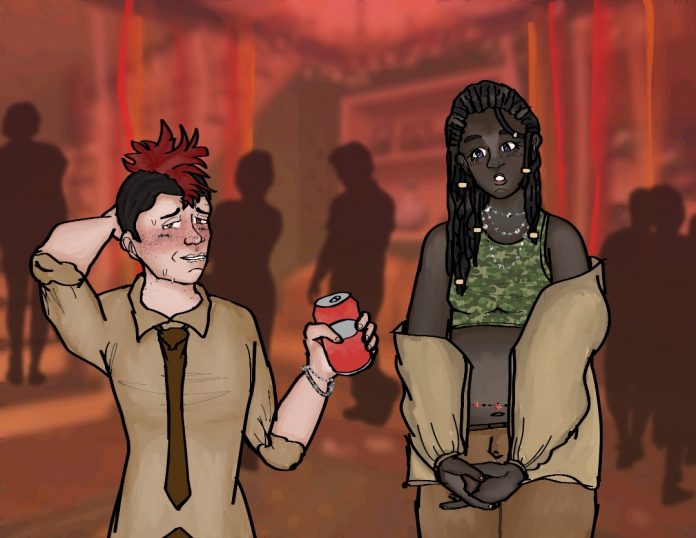As Durham Region expands, so does its artistic community. Since 2016, artists now constitute roughly 2.7 per cent of the area’s population, as reported by Statistics Canada.
This expansion has sparked the emergence of an increasingly vibrant and welcoming artistic culture.
Durham’s flourishing art scene, complete with a multitude of events and centres, offers a fertile ground for creativity. Kyli Jenkins, a versatile local artist engaged in everything from crafts to dance, praises the region for its supportive environment for emerging talent.
“Everybody in our community is welcomed with open arms, no matter what your talent. It’s honestly just such an open experience for people who want to join up into the community and an even better experience for the people who’ve been around and seen it all kind of flourish,” Jenkins said.
This surge in artists discovering the welcoming nature of the art community creates a vibrant and inclusive artistic culture where artists of various backgrounds and disciplines can learn from one another.
According to Durham College student Olivia Copeland, the region’s dedication to fostering artistry is transforming the creative landscape and changing lives, making it a hub of artistic innovation and community support.
“Durham has a lot of opportunities for either new artists, old artists, [and] anywhere in between,” she said. “There’s so many options for people like me and other people.”
These opportunities enable artists from various genres and traditions to learn from one another and push the boundaries of their creative expression, fostering a strong sense of community.
Many artists say the Durham region’s art community is a close-knit group once artists settle in, fostering an open space for artistic growth.
However, the region is proactive in boosting smaller artists with initiatives like placemaking policies.
According to the Regional Municipality of Durham, placemaking policies are initiatives designed to transform unused spaces into vibrant community hubs, frequently providing local artists with opportunities to showcase their work.
In addition, the region is home to many formal venues that cater to artists, such as the Robert McLaughlin Gallery, Kay’s Place, and the Station Gallery, where formal events are held showcasing the works of local artists.
In light of this, the Robert McLaughlin Gallery is holding a more formal exhibition, “Unity Through the Arts,” which will feature the works of local artists, such as Aisha Chiguichon and Denise Wilkins of Oshawa.
Though some artists prefer some of the more casual events in the community, the Durham Region also holds events that are open to more than just artists, allowing the public to be immersed in the local arts community as well.
The Station Gallery is well known for its community events, allowing community members to learn about the Durham Region’s art scene.
“The Station Gallery is one of the best places for growing artists,” said Copeland.
The gallery hosts volunteer opportunities, art showings, and different art talks about Canadian art and artists for those interested in the observational side of the community, though they also host artist meetups.
These meetups run from Oct. 16 to Dec. 4 and are hosted by local artist Rekha Mistry. They provide a space for artists to share their work, work collaboratively, and discuss the arts.
Initiatives like these, while seeming small, have a significant impact on the arts community.
These opportunities not only assist artists in gaining recognition but also foster relationships with their peers, enabling further artistic development.
“They can really get their money’s worth back in their notoriety for what they are really able to put out there,” Jenkins said.
These opportunities are not only artistic outlets but also spaces for personal growth.
With all these events and initiatives, and gatherings in the Durham Region, some artists are still expressing a desire for more collaborative opportunities to work with other artists outside their mediums.
“Honestly, I think we should have a centre for all forms of art. Meaning artists helping artists and building friendships, too,” said Michael Keast, a local rapper.
Despite this, many artists are expressing hope that the region and its artists will continue to maintain this welcoming nature.
Copeland emphasizes that communication is crucial in nurturing the intimate art community of the region. The two key components for growing the art community are “communication and being a good neighbour,” Copeland said.




